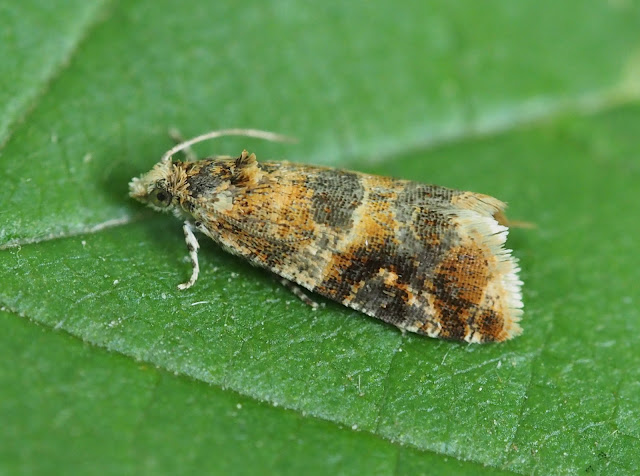 It's been a busy few weeks. I finished university, quit my job at Tesco and have spent the remaining time helping a PhD student carry out butterfly surveys in orchards across Herefordshire and Gloucestershire (you can read about Charlotte's ongoing research project here). Butterfly sightings within the orchards themselves are few and far between, particularly on the more intensively managed farms, and have mostly been limited to singles of Green-veined White and Painted Lady as they speed through. However, the overgrown field margins and buffer strips that surround each orchard are more productive - this striking dalmation spotted Thistle Ermine burst out from the undergrowth as I walked a transect on Monday.
It's been a busy few weeks. I finished university, quit my job at Tesco and have spent the remaining time helping a PhD student carry out butterfly surveys in orchards across Herefordshire and Gloucestershire (you can read about Charlotte's ongoing research project here). Butterfly sightings within the orchards themselves are few and far between, particularly on the more intensively managed farms, and have mostly been limited to singles of Green-veined White and Painted Lady as they speed through. However, the overgrown field margins and buffer strips that surround each orchard are more productive - this striking dalmation spotted Thistle Ermine burst out from the undergrowth as I walked a transect on Monday.Everything we have so far has been passed on to the experts for further discussion, but which ever way you look at it this represents the first record of either species for Worcestershire. The whole saga now brings to light the difficulty involved in identifying these two species, and casts doubt over the reliability of forewing characteristics when telling them apart. The mystery deepens!
Epinotia pygmaeana (or is it?)
To clear my head of this moth conundrum, I visited Monkwood to survey more moths. Fighting fire with fire. I was surveying Drab Looper to be specific, an uncommon day-flying species that frequents coppice woodland with healthy populations of Wood Spurge, the larval foodplant.
Drab Loopers were thin on the ground, and one individual was all I could turn up in a two hour transect walk. There were plenty of other things to keep my eyes occupied though.
Blood-vein
Pammene germmana
Lobesia reliquana




3 comments:
Oh, beautiful moths. They are sublime.
Great set of photos and moths, the Rhinoceros Beetle is stunning.
Amanda xx
Thanks both. They are stunning! :)
Post a Comment